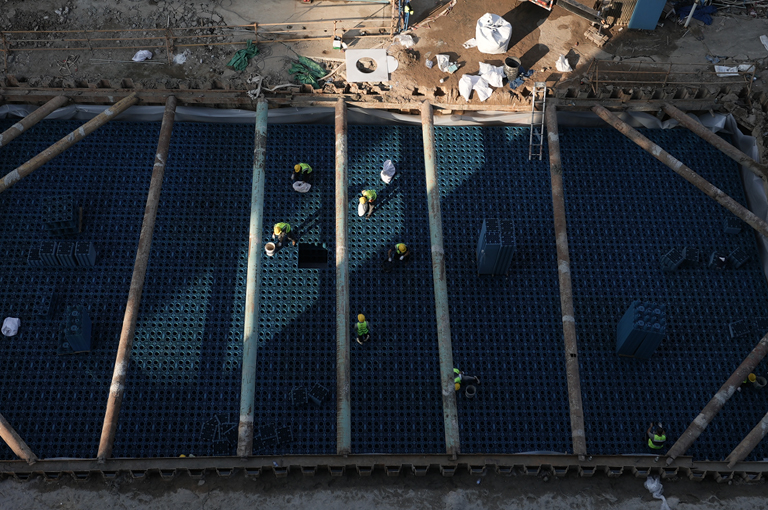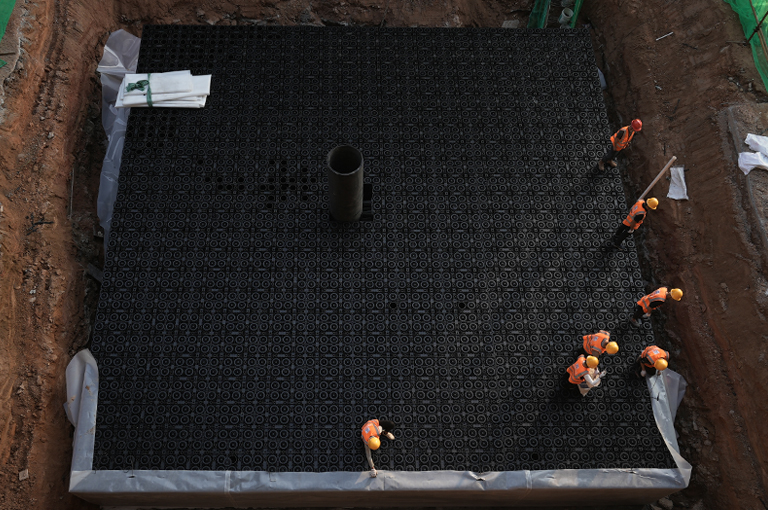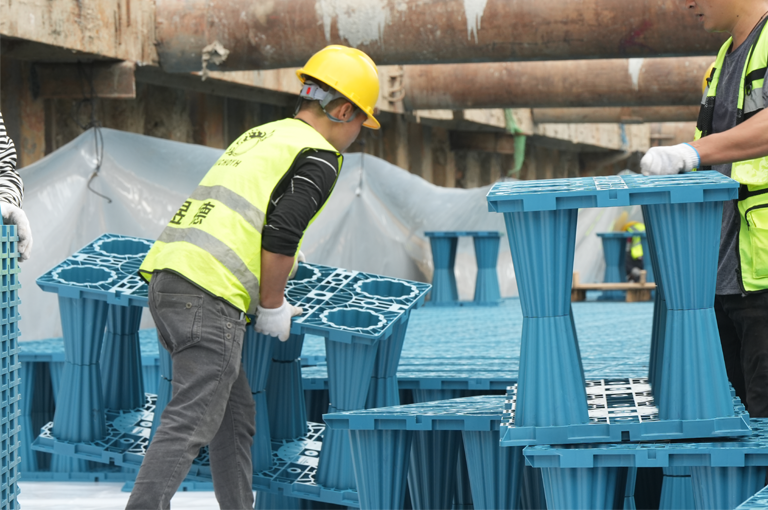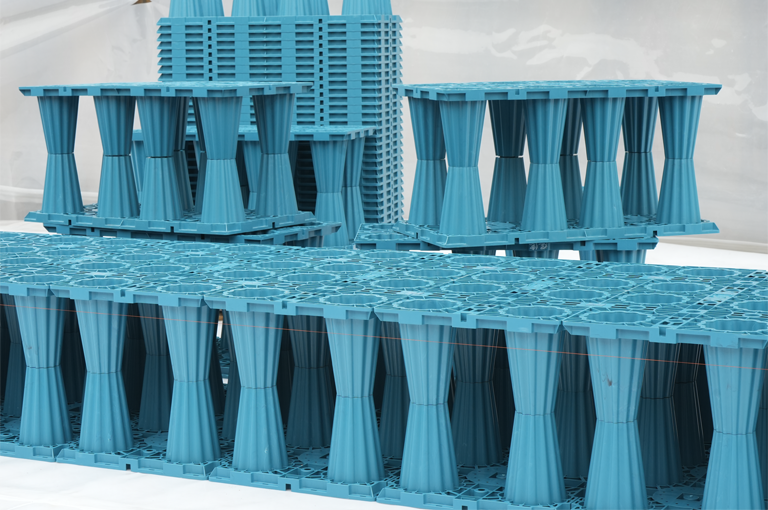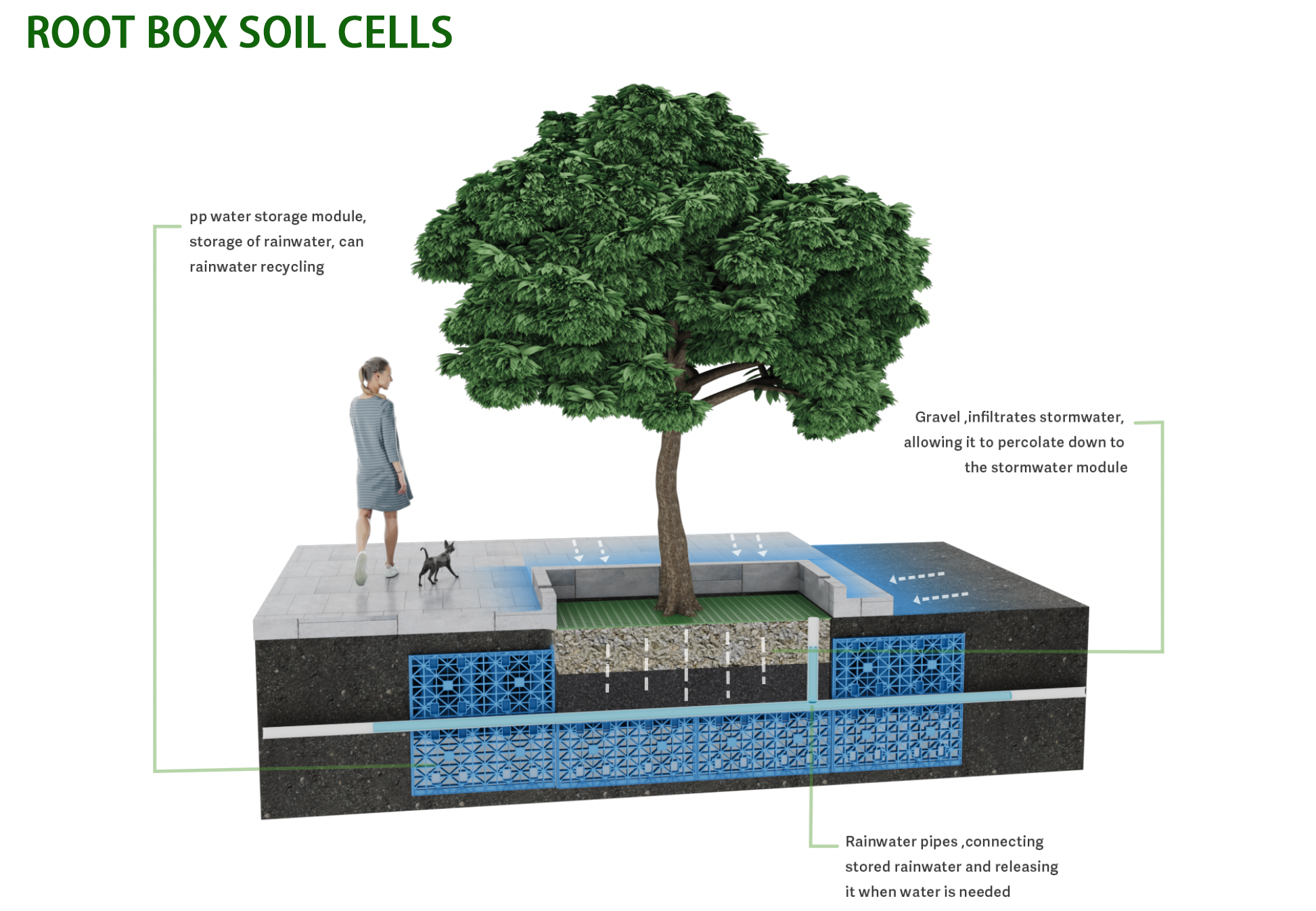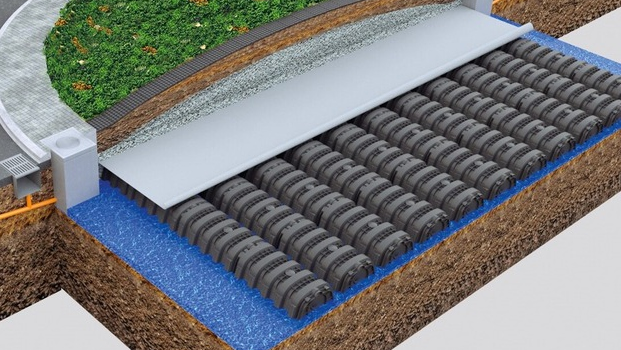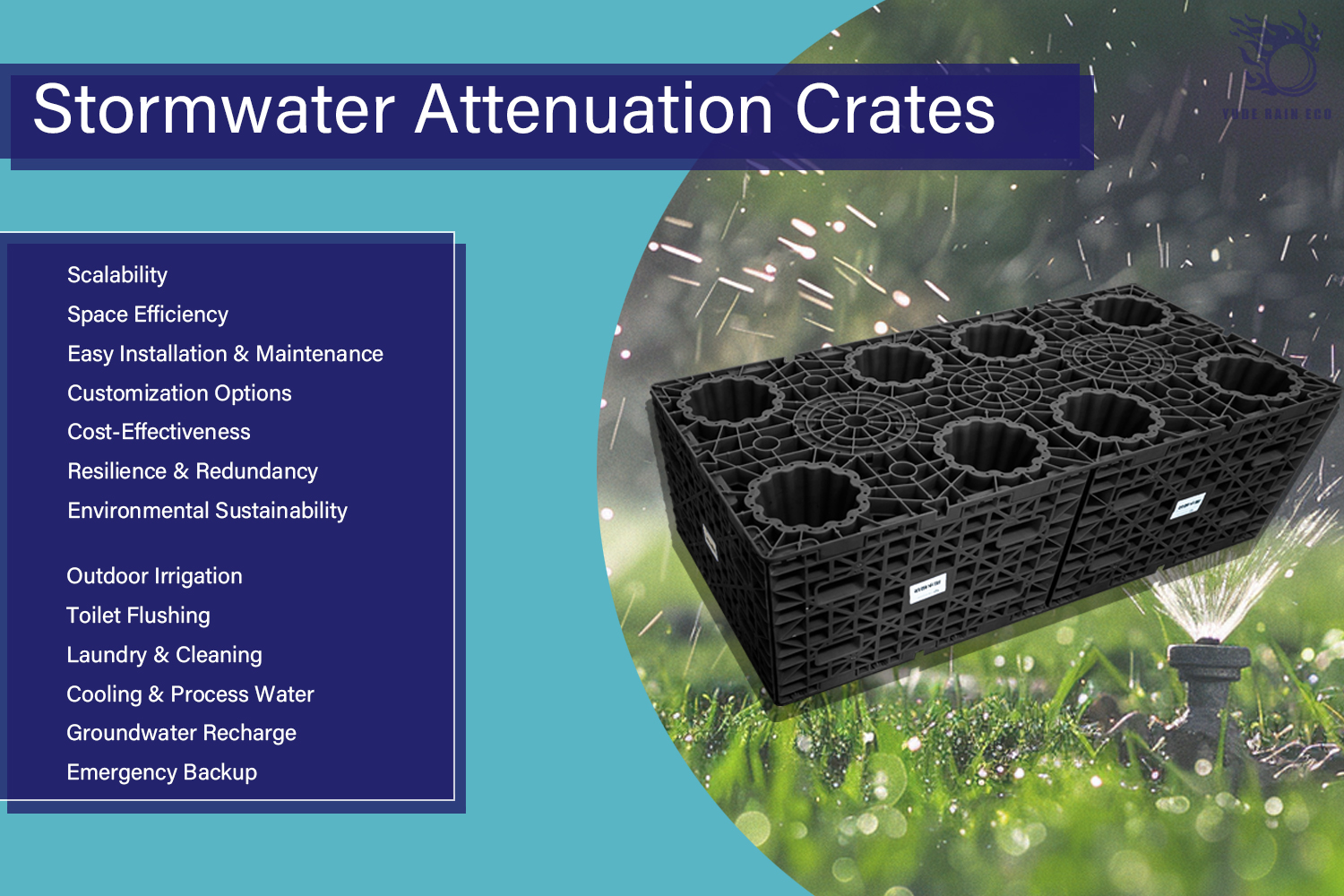In an era of rapid urbanization and increasing environmental challenges, effective stormwater management has become a critical concern for developers, engineers, and urban planners. Traditional drainage systems are often inadequate to handle the volume and intensity of modern rainfall events, leading to flooding, erosion, and water pollution. Enter geocellular attenuation tanks—also known as Geocellular Storage Tanks or Geocellular Attenuation Tanks—a revolutionary solution designed to address these challenges head-on.
Yude Rain Eco specialize in manufacturing and supplying high-performance geocellular attenuation tank systems that are transforming the way stormwater is managed worldwide. In this comprehensive guide, we’ll dive deep into the science, applications, and benefits of geocellular attenuation tanks, supported by real-world data and case studies, to provide you with the knowledge you need to make informed decisions for your projects.
Understanding geocellular attenuation tanks: What Are They?
geocellular attenuation tanks are modular, underground structures made from high-density polyethylene (HDPE) or other durable materials. These tanks consist of interconnected cells that form a robust framework capable of storing large volumes of stormwater. Their design allows for efficient water collection, storage, and controlled release, making them an essential component of modern sustainable drainage systems (SuDS).
The terms Geocellular Storage Tanks and Geocellular Attenuation Tanks are often used interchangeably, but they highlight different functions:
- Storage Tanks: Focus on collecting and storing rainwater for reuse, such as irrigation or industrial processes.
- Attenuation Tanks: Designed to slow down the release of stormwater into drainage systems, reducing the risk of flooding and erosion.
The Science Behind Geocellular Attenuation Tanks
- Modular Design
geocellular attenuation tanks are composed of individual units that can be easily connected to form a larger system. This modularity allows for flexibility in design and scalability, making them suitable for projects of all sizes. - High Strength-to-Weight Ratio
Despite their lightweight construction, geocellular attenuation tanks are incredibly strong. The cellular structure distributes loads evenly, enabling them to withstand the pressure of soil and surface traffic without deformation. - Hydraulic Efficiency
The open structure of geocellular attenuation tanks ensures optimal water flow, minimizing the risk of blockages and maximizing storage capacity. This design also facilitates easy maintenance and cleaning. - Environmental Compatibility
Made from recyclable materials, geocellular attenuation tanks are an eco-friendly solution that aligns with green building standards and sustainability goals.
Applications of geocellular attenuation tanks
geocellular attenuation tanks are incredibly versatile and can be used in a wide range of applications, including:
- Urban Development
- Residential Projects: Managing stormwater in housing developments, apartment complexes, and gated communities.
- Commercial Properties: Providing flood prevention and water reuse solutions for office buildings, shopping malls, and industrial parks.
- Infrastructure Projects
- Roads and Highways: Preventing flooding and erosion along transportation corridors.
- Airports and Ports: Ensuring safe and efficient stormwater management in critical infrastructure.
- Green Infrastructure
- Rainwater Harvesting: Collecting and storing rainwater for irrigation, cleaning, and other non-potable uses.
- Green Roofs and Walls: Integrating geocellular attenuation tanks with green building features to enhance sustainability.
- Flood Prevention
- Flood-Prone Areas: Reducing the risk of flooding in vulnerable regions by attenuating stormwater flow.
- Coastal Zones: Protecting coastal communities from the impacts of heavy rainfall and rising sea levels.
- Industrial Applications
- Manufacturing Facilities: Managing stormwater runoff from large industrial sites.
- Mining Operations: Preventing water contamination and erosion in mining areas.
Benefits of geocellular attenuation tanks
Superior Storage Capacity
geocellular attenuation tanks offer a high storage volume relative to their footprint, making them ideal for space-constrained projects. Their modular design allows for customization to meet specific storage requirements.
Durability and Longevity
Constructed from high-quality materials, geocellular attenuation tanks are resistant to corrosion, chemicals, and environmental stressors. They have a lifespan of 50 years or more, ensuring long-term performance and reliability.
Cost-Effectiveness
- Reduced Infrastructure Costs: By managing stormwater onsite, geocellular attenuation tanks reduce the need for expensive drainage infrastructure upgrades.
- Lower Maintenance Costs: Their robust design and self-cleaning properties minimize maintenance requirements.
- Efficient Installation: Lightweight components and modular construction reduce installation time and labor costs.
Environmental Sustainability
- Water Conservation: Capturing and reusing stormwater reduces demand on municipal water supplies.
- Ecosystem Protection: By attenuating stormwater flow, geocellular attenuation tanks help prevent erosion and protect aquatic habitats.
- Carbon Footprint Reduction: Using recyclable materials and promoting water reuse contributes to lower carbon emissions.
Regulatory Compliance
geocellular attenuation tanks help developers and property owners comply with local and international stormwater management regulations, avoiding fines and legal issues.
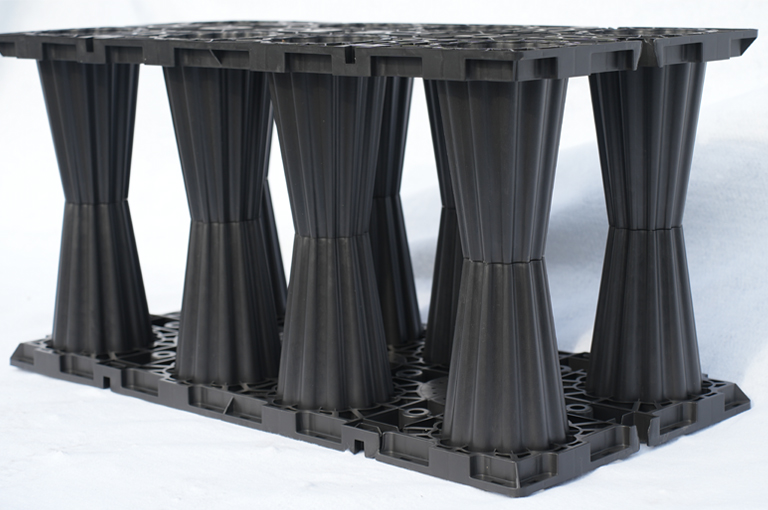
Case Studies: Real-World Applications of Geocellular Attenuation Tanks
1. Urban Redevelopment Project in Europe
A major city in Europe faced frequent flooding due to outdated drainage systems. By installing geocellular attenuation tanks beneath a new residential complex, the city was able to reduce flood risk, improve water quality, and create additional green space for residents.
Data Point: The project resulted in a 30% reduction in flood incidents and a 20% increase in green space within the first year of implementation.
2. Industrial Park in Asia
A large industrial park in Asia struggled with stormwater runoff from its manufacturing facilities. The installation of geocellular storage tanks allowed the park to collect and reuse rainwater for cooling and cleaning processes, reducing water costs and environmental impact.
Data Point: The industrial park reported a 40% reduction in water consumption and a 25% decrease in operational costs related to water management.
3. Highway Expansion in North America
A highway expansion project in North America required a solution to prevent erosion and flooding along the new route. geocellular attenuation tanks were installed beneath the road surface, providing effective stormwater management without disrupting traffic flow.
Data Point: The project achieved a 50% reduction in erosion-related maintenance costs and a 15% improvement in road safety during heavy rainfall events.
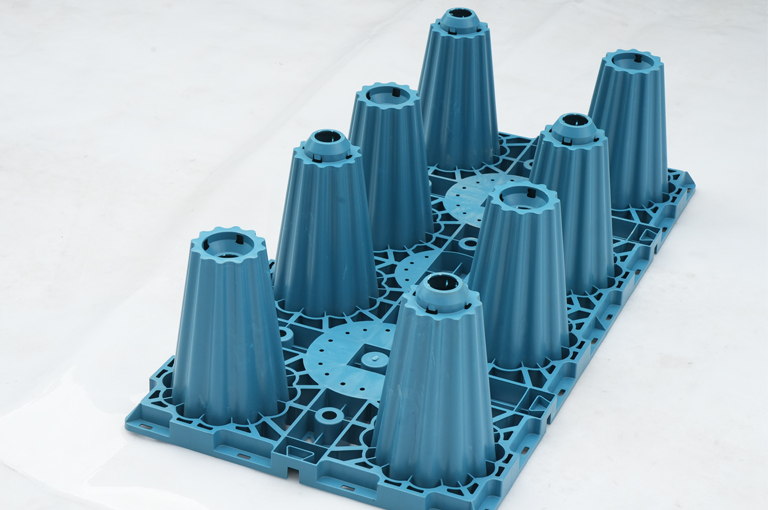
Choosing the Right Geocellular Attenuation Tank System
When selecting a geocellular attenuation tank system for your project, consider the following factors:
- Project Requirements
- Storage capacity
- Site conditions (e.g., soil type, water table)
- Regulatory requirements
- Product Quality
- Material durability
- Load-bearing capacity
- Hydraulic efficiency
- Supplier Expertise
- Industry experience
- Technical support
- Customization capabilities
Yude Rain Eco offer a wide range of geocellular attenuation tank systems tailored to meet the unique needs of your project. Our team of experts is available to provide guidance and support at every stage, from design to installation.
Frequently Asked Questions (FAQs)
- What is the lifespan of a geocellular attenuation tank?
geocellular attenuation tanks typically have a lifespan of 50 years or more, depending on the material and installation conditions. - Can geocellular attenuation tanks be installed under heavy traffic areas?
Yes, geocellular attenuation tanks are designed to withstand heavy loads and can be installed beneath roads, parking lots, and other high-traffic areas. - How do geocellular attenuation tanks compare to traditional stormwater management systems?
geocellular attenuation tanks offer superior storage capacity, durability, and environmental benefits compared to traditional systems like concrete tanks or open drainage channels. - Are geocellular attenuation tanks suitable for rainwater harvesting?
Absolutely! geocellular attenuation tanks are an excellent choice for rainwater harvesting, providing a reliable and efficient way to collect and store water for reuse.
Why Choose Yude Rain Eco?
As a leading manufacturer and supplier of geocellular attenuation tanks, Yude Rain Eco is committed to delivering innovative, high-quality solutions that meet the highest international standards. Our products are trusted by clients worldwide for their reliability, performance, and environmental benefits.
- Global Reach: We serve clients in over 50 countries, providing reliable shipping and technical support.
- Custom Solutions: Our team works closely with you to design systems that meet your specific needs.
- Sustainability Focus: We prioritize eco-friendly materials and practices in everything we do.
Get Started Today!
Ready to take your stormwater management to the next level? Contact Yude Rain Eco today to learn more about our geocellular attenuation tank systems and how they can benefit your project.
Visit our website: www.yuderaineco.com
Email us: [email protected]
By choosing Yude Rain Eco, you’re not just investing in a product—you’re investing in a sustainable future. Let’s work together to build a greener, more resilient world!

